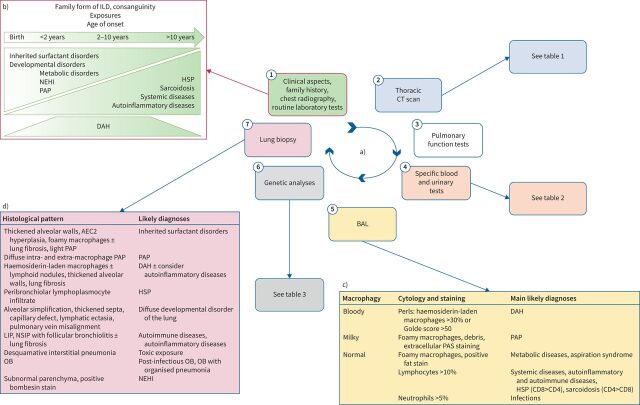FIGURE 1.
Investigations in childhood interstitial lung disease (chILD) diagnostic workup. a) The investigations are performed one after the other to reach a chILD aetiology. The first step is usually done by the general paediatrician (framed in red), and includes family history, clinical evaluation, chest radiography and routine laboratory tests. b) Age at onset is crucial information that helps to consider some aetiologies more than others. c) Bronchoalveolar lavage (BAL) eliminates infectious causes of ILD and provides clues to the most likely diagnoses. d) When thoracic computed tomography (CT) scan, specific blood tests, BAL and genetic analyses could not assess a diagnosis, lung biopsy is the last step of the diagnostic process, allowing to assess the most likely diagnoses in most cases. NEHI: neuroendocrine cell hyperplasia of infancy; PAP: pulmonary alveolar proteinosis; HSP: hypersensitivity pneumonitis; DAH: diffuse alveolar haemorrhage; PAS: Periodic acid–Schiff; AEC2: type 2 alveolar epithelial cells; LIP: lymphoid interstitial pneumonia; NSIP: non-specific interstitial pneumonia; OB: obliterans bronchiolitis.

